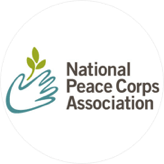Bring Your Offline Community Online
In 1961, President John F. Kennedy created the Peace Corps. It was the height of the cold war, and yet, this new organization was created “To promote world peace and friendship.” Since then, over 200,000 Americans have joined the Peace Corps and have performed their 2-year volunteer service in 139 countries.
But the Peace Corps experience doesn’t end after 2 years. Returned Peace Corps Volunteers (RPCVs) have a shared experience that connects them to a community that continues to do good in the world. That’s where The National Peace Corps Association comes in. This independent non-profit connects and champions RPCVs and make sure their voices are heard.
Erica Burman is a former Peace Corps volunteer in The Gambia and now Director of Communications for The National Peace Corps Association. She explains why they started their NING community, “Before our NING community, RPCVs were scattered all over the world and were hard to find. Even online there was no single place where volunteers could get together.”
Our virtual space
“We were looking for a way to create this virtual place. As a non-profit, we didn’t have hundreds of thousands of dollars to build a custom platform–and didn’t have to, because NING gave us the power to build the place we envisioned. We were even able to use a NING design template, right out of the box.”
“I’ve been around social networks for a long, long, long time, so I know what I like in an online space. We know our members well, and needed a place we could be authentic, genuine and responsive.”
The NPCA NING community has over 26,000 members and is the largest online Peace Corps social network. “This is where our members meet, discuss issues, and post events. Members can ask questions and have them answered by other members, often in minutes.”
“We’re providing a service, a platform, for our community, and as a member alumni group that helps us demonstrate why you should support and join us.”
“Our NING network is one thing where we can say – we’ve created this for you, it’s there for you to use however you need.”
Not only can members get answers to questions that only fellow Peace Corps Volunteers would know, they also use the community to find people they served with, and meet new members who live nearby they otherwise wouldn’t have known. “The Black Hills South Dakota group has all of three people, but somebody created the group and now they can meet others in their area, no matter how remote.”
Members want connections–and privacy
“We went from zero to 10,000 members our first year–proof that people really wanted this way to interact with other peace corps people. Because the Peace Corps have been around for over 50 years, many of our first members were older–not people we thought would take to an online community, but we were gratified that they did.”
Burman explains why having their own exclusive site is crucial to their community.
“A lot of our members have concerns about privacy, and don’t want to share their personal information on other social media sites.” Yet they feel comfortable in our members-only community powered by NING.
“Our NING community is cozy because it’s by and for our members. You must have served in the Peace Corps to join.”
“On a practical side, other social media sites don’t ensure that members will see your posts. Berman says, “While Facebook was good for us at the beginning, now it feels like fewer and fewer people are seeing our content. We can’t afford to promote posts and even if you do, there’s no guarantee members see them.”
“If I send something out in the NING community I know they see it. Plus, it’s easy to export our membership data for our monthly email newsletter.”
“When we send a message out to our NING community, we always see a bump in responses. We sent out a survey to many places asking members about their service and life after the Peace Corps–the NING community was the most responsive.”
The association still uses the reach of other social networks, including Facebook, Twitter, YouTube and LinkedIn, but their NING site is the core of their online efforts.
Tips on running a community
Burman says focus is vital, “Our community is diverse – but it’s all about one thing.”
It’s not enough to know your community, you have to be part of it–then you can be helpful in a way someone from the outside couldn’t be.
Burman’s advice, “In a way it’s like hosting a cocktail party. It’s called “social” media, so it’s not one-way–it’s a conversation–real, authentic, and responsive. Care and feeding is required, it’s about stimulating content and conversation.”
“I think the shared calendar is one of the most powerful things about the site. We encourage all our members to post events so no matter where you are, you can look at this one calendar and find a real-world event in your area.”
Photo sharing is also popular, “We have over 13,000 photos posted by our members and they help start conversations.”
“As an alumni group we need to answer ‘what have you done for us lately?’ Our answer, ‘we created this community for you!’”
“These are all tools–feel free to play with them. There’s no right or wrong answer, it’s constantly an experiment. You have to be open to trying new things–some things work, some won’t, and that’s OK. It varies based on personality and quirks of your community, and over time, you learn more about how to keep people engaged.”
The original mission of the Peace Corps, to promote peace and friendship, is still alive and well around the world–and now online, too.

